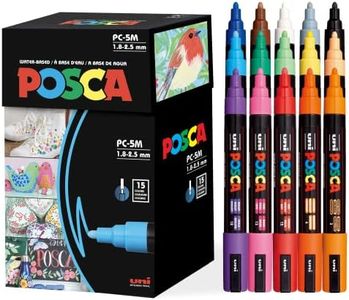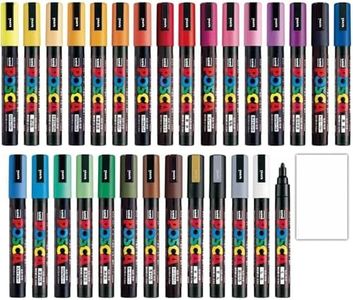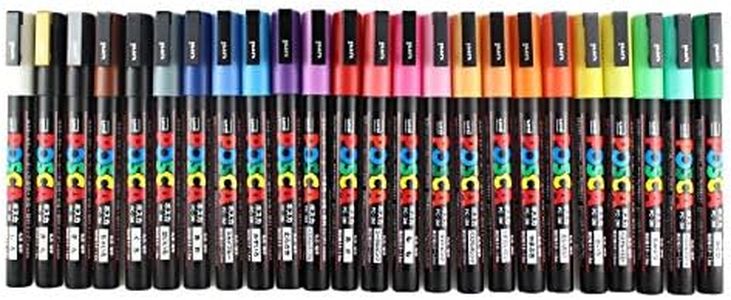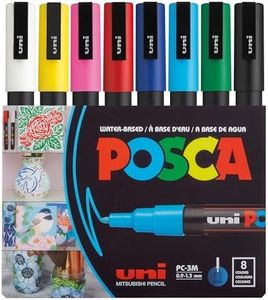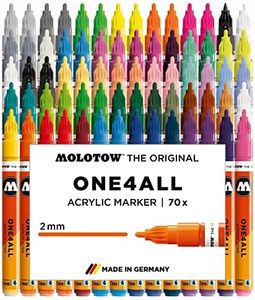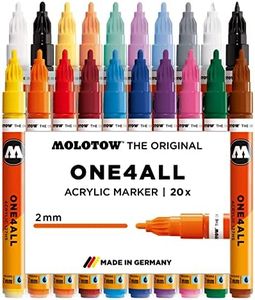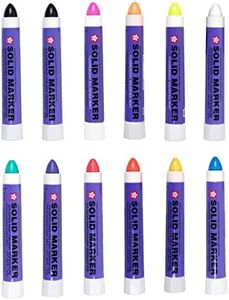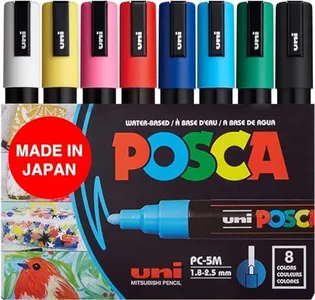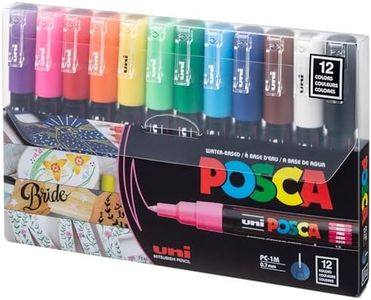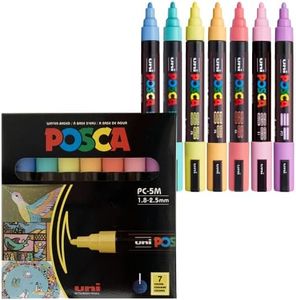We Use CookiesWe use cookies to enhance the security, performance,
functionality and for analytical and promotional activities. By continuing to browse this site you
are agreeing to our privacy policy
10 Best Paint Pens
From leading brands and best sellers available on the web.Buying Guide for the Best Paint Pens
Choosing the right paint pens can make all the difference for your creative projects, whether you're working on paper, rock, glass, wood, fabric, or metal. Start by considering what, and on which surfaces, you plan to use the paint pens. Think about the type of designs or details you want to achieve. Understanding a few key factors will help you find paint pens best suited to your needs, making your artwork both durable and vivid.Tip SizeTip size refers to how wide or fine the pen's drawing point is. This is an important specification because it determines how precise or bold your lines will be. Tip sizes usually range from extra fine (for delicate details and writing) to broad (for coloring large areas or making bold strokes). Fine tips (around 0.7mm or smaller) are ideal for drawing finer lines and intricate details, whereas medium (1-2mm) tips are good for general use, and broad tips (greater than 2mm) are better for filling in large spaces or making bold markings. Choose a tip size based on the kind of work you want to do: artists who sketch or do detailed designs may prefer finer tips; those covering larger areas or making posters may want broader tips.
Ink TypePaint pens come with different types of ink, with the most common being water-based and oil-based inks. Ink type affects how the color looks, how fast it dries, and what surfaces it best adheres to. Water-based inks are less toxic, have less odor, and are easy to clean up, making them good for paper, cardboard, and indoor projects. Oil-based inks are more durable and can withstand outdoor conditions, sticking well to glass, metal, stone, and plastic. If you want easy, low-odor use for indoor art, go for water-based. For long-lasting, outdoor, or multi-surface applications, oil-based inks are best.
Color RangeThe color range of a paint pen set means how many different colors are offered. A wide color range gives you more creative freedom for blending, shading, and detailed designs. Sets with only a few basic colors might be enough for simple projects or touch-ups, while larger sets with dozens of shades are perfect for artists doing complex or multicolored work. Think about your typical projects—if you paint mainly in basic colors, a small set is fine; for artwork requiring many different shades, seek sets with an extensive palette.
OpacityOpacity describes how solid or transparent the color appears when applied. High opacity means the paint fully covers the surface beneath, which is ideal for dark backgrounds or for layering colors. Lower opacity may allow underneath colors or textures to show through, which can be an artistic choice. If you want bold, stand-out marks or to paint over dark surfaces, choose pens known for their opacity. For blending or watercolor-like effects, lower opacity can be beneficial. Your project's surface color and your desired look will guide your choice.
Durability and LightfastnessDurability refers to how resistant the paint is to fading, rubbing off, or washing away. Lightfastness specifically points to the paint's ability to resist fading when exposed to light. These specs are important if your artwork needs to last, especially if it will be exposed to sunlight or frequent handling. For crafts that need to be washable or are for outdoor use, check that the paint is labeled as permanent or weatherproof. If your work will be displayed or handled regularly, find pens designed for high durability and lightfastness.
